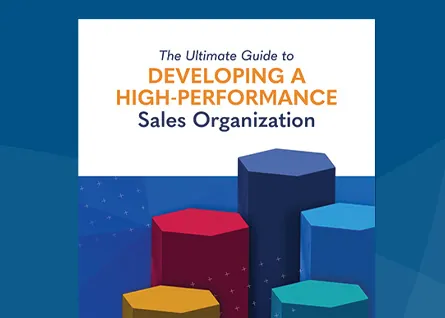The Top Sales Approaches for B2B Selling

For fickle foodies, you can’t beat a smorgasbord. How else can you get a prime rib with a side of pizza? Aside from its glutinous aspects, a smorgasbord can satisfy a multitude of tastes. In the same way, a seller’s sales approach can satiate the complex needs of sundry buyers. But sellers must know the tactics to employ.
With the internet, buyers are better educated. At the same time, market uncertainty adds hesitancy and influencers/decision makers. In this new landscape, a single, one-size-fits-all sales approach will not work. Instead, a smorgasbord approach, mixing and matching, is best. With that in mind, here are the top sales approaches to reach today’s B2B buyers:
Social Selling
In the past, selling was transactional. Buyers had needs. Sellers had products. The two agreed on price and shook hands. Essentially, in this model, your products were widgets, replaced by other widgets at a cheaper price. And your salespeople were order takers, limited to, “Yes, we have 20,000 widgets for X dollars, Y dollars if you buy 40,000.”
Social selling changed everything. Today, rather than waiting for clients to find you, you find them. The internet is the world’s largest market, convention, and conference. This is where to find your prospects and clients. And with just a few clicks, you can learn a trove of information.
In this approach, sellers use social media to research and engage prospects and clients. In place of outdated directories, sellers employ sites like LinkedIn, Facebook, and Twitter to achieve these benefits:
- Greater visibility
- Build their personal brand
- Reach more decision makers
- Nurture and build stronger relationships
Social selling not only lets sellers view prospects. It also lets prospects see you. Prior to engagement, it shows prospects and clients who you are. By highlighting your brand and accomplishments, they form an impression. This makes them more receptive to your outreach and content.
But more than promotion, content is key to social selling. From blogs, case studies, and white papers, sellers can showcase their knowledge and thought leadership. This helps prospects differentiate you from your competition. It shows you have the experience and expertise to understand their needs and solve their problems.
With social selling, you reach more players. Simply liking a post or sharing a comment can spark a conversation. When a prospect mentions a supply chain problem in the plains, you note your experience in that region. This primes them to receive your call. And your conversations start on a higher level than with unsolicited messages.
When you meet prospects on social media, you cut the awkwardness of lengthy intros. With a few clicks, you can research them, and they can research you. Instead of a stranger, you’re a somebody with a proven record, an immediate contender for their interest.
As you like, comment, and share, you engage prospects, clicking into their spheres and vision. This puts you before the VIPs you need. From here, seek out mutual friends, acquaintances, and contacts. Request referrals. Namedrop. The faster you connect, the faster you prove yourself. This increased engagement strengthens relationships and shortens sales cycles.
Value-Added Selling
Beyond exchanging of goods for money, value-added selling enhances the value of the product or service. This longer-term approach presents salespeople as more than stereotypes. It also makes customers more than numbers. Here are some benefits to adding value:
- Educate customers
- Differentiate from the competition
- Augment solutions
- Boost service and warranty agreements
- Ensure longer commitments
Value-added selling offers more than one-off sales. It’s moving past limited, cost-centered transactions. Instead of haggling over price, sellers use their expertise to build on the buyer’s limited knowledge. This can be more nuanced and informative for buyers. For clients, value-added selling is the difference between Googling a symptom and consulting a healthcare professional.
Also, value-added selling sets your products apart. This not only highlights your expertise; it can make or break a sale. Often, the difference between one product and another is subtle. It can also be negligible. Use your product knowledge to pinpoint the greater value of your solution.
Further, value-added selling makes a product worth its price. Therefore, your add-ons aren’t decorative trinkets. Expedited shipping and extended service can be vital to long-term success. In addition to facilitating sales, this reveals a seller who will work with buyers to achieve the best deal.
Consultative Selling
A take-off from relationship selling, which emphasizes personal connections, consultative selling is an advanced, proactive sales approach. Sellers build on their personal relationships to become trusted advisors. Here are some essential traits of consultative sellers:
- Active listening
- Reading body language
- Displaying empathy
- Forecasting
- Advanced product knowledge
If relationship sellers open the door, consultative sellers take a seat at the table. Beyond sharing a joke or recapping a weekend, consultative sellers know their clients. They listen to what the client literally says while hearing what the client really needs. They understand their ticks, interpret their movements, and get beyond the surface.
Even more, while relationship sellers can diagnose a problem, they may lack the skill to fix it. This necessitates experts, such as the tech squad or ops managers. Instead, consultative sellers have advanced product knowledge.
This is key for consultative sellers. While you didn’t build the product, you know it, use it, and understand it. You arrive on scene with tools and solutions. And consultative sellers are skilled enough to display, demo, and discuss the product. You have seen the competition’s products. You’ve compared. You’ve contrasted. You’ve consulted. You can highlight the differences and educate customers on value over price.
In another upgrade over relationship sellers, consultative sellers can disagree with clients. If the client is short-sighted, hasty, or misinformed, consultative sellers must speak up. This is one of the most important aspects of the buyer/seller relationship. And it comes from forming relationships and building trust. Of course, this must be respectful. It’s the client’s business and their money. However, trusted advisors make it their business to act in the client’s best interest and ensure long-term success.
As buyers became more educated and deals more complex, their needs have changed. For some, a quick, one-off solution can satisfy a short-term need. However, for buyers with a directory of decision makers and competing interests, trust trumps all. In our rapidly changing sales environment, one lone sales approach will not cut it. Today, there are more buyers with varied tastes. A singular meal cannot satisfy all. Sellers with a smorgasbord of sales techniques can better blend, pair, and tailor their approaches. This satiates more buyers and closes more deals.

- Account Planning (11)
- Awards (49)
- Client Testimonial (37)
- Personal Branding (19)
- Podcast (11)
- Research (70)
- Sales Career Development (87)
- Sales Coaching (156)
- Sales Consulting (137)
- Sales Culture (170)
- Sales Enablement (354)
- Sales Leadership (110)
- Sales Management (248)
- Sales Negotiation (16)
- Sales Prospecting (124)
- Sales Role-Playing (18)
- Sales Training (234)
- Selling Strategies (263)
- Soft Skills (70)
- Talent Management (94)
- Trusted Advisor (27)
- Virtual Selling (49)
- Webinar (9)


























